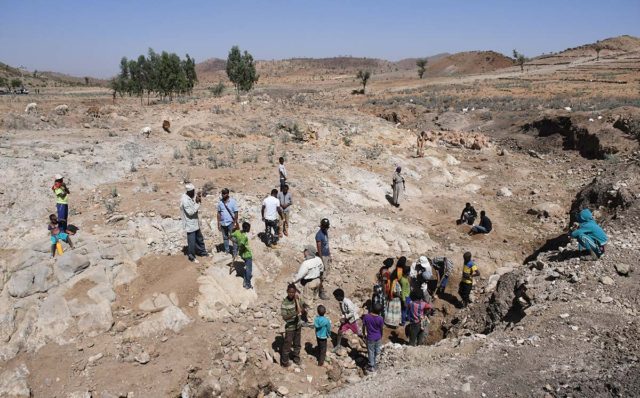
Estimated reading time: 13 minutes
The impact of Covid-19 on the entire colored stone supply chain is undeniable. While most people have personally felt the effects in their environment, it is important to realize that the people working at the source also experienced the negative consequences of the pandemic. In this article, we aim to give you an overview of the situation in East Africa.
This general region of East Africa is an incredibly important supplier of many gem species but often remains out of the spotlight. Kenya and Tanzania are the major source of tsavorite garnets; Mozambique dominates the ruby supply nowadays; and sapphires are found throughout the entire region with Madagascar being a leader. The following is a country overview of the main producers.
Ethiopia
Africa’s second most populous nation has only become a source of gems for the last few years, but it supplies considerable volumes of opals and emeralds to the market. According to Mr. Biniyam Bekele, the Ethiopian governments and local NGOs have spent a lot of energy in creating awareness about Covid-19 during the first months.
Focusing heavily on the basic guidelines that could be followed by most people, i.e. washing hands and wearing masks, they tried to limit transmission with relative success. Governments also aimed to supply sufficient safety equipment such as surgical masks, gloves, etc., to medical personnel throughout the country.
On top of Covid-19, Ethiopia has been going through a lot of political changes that have only multiplied the challenges and insecurities brought on by the pandemic. The northern provinces where sapphires were mined, have been impacted heavily by this conflict. Conflicts in the southern provinces, where a variety of gems is found—with emerald being the most prominent one were more localized. Most of the gem mining takes place in remote communities by small artisanal mining crews, and as such they were not directly impacted by Covid-19. What hindered them most was the lack of stability in price and security, which made for unfavorable selling conditions for their materials. Due to district border closures, the link between buyer and miner was broken, creating a lot of uncertainty for the gem producers.
While this changed situation has led to an official decrease in production, it is generally assumed that less material is officially reported and that the amount of smuggled and undisclosed gem production has increased.
Kenya
Kenya has had a long history of mining, with significant gem deposits along the eastern part of the border with Tanzania. Other areas of the country also produce gems, but their local industry isn’t as mature as the one in the Taita-Taveta District, which hosts the major tsavorite and ruby deposits.
The Kenyan government reacted quickly to the spreading virus and enforced strict lockdowns in the affected areas, as well as restricting local and international travel.
A major local lockdown ended in the first quarter of 2021. This impacted larger gem mining operations directly because their staff couldn’t travel to and from the mines, since they were stuck in their native villages or in the capital.
While this impacted bigger operations with more staff, smaller mines also suffered. Nevertheless, small-scale, artisanal mines (ASM) could operate easier since they were too small to be affected by government restrictions or they were simply able to fly under the radar. According to Mr. Bruce Bridges (Bridges Tsavorite), most support was offered directly from employers. All staff members at Bridges Tsavorite were kept on full salary and received medical support. The government did play an important role in informing people about the virus, how to halt its spread, and measures that could be taken in basic circumstances.
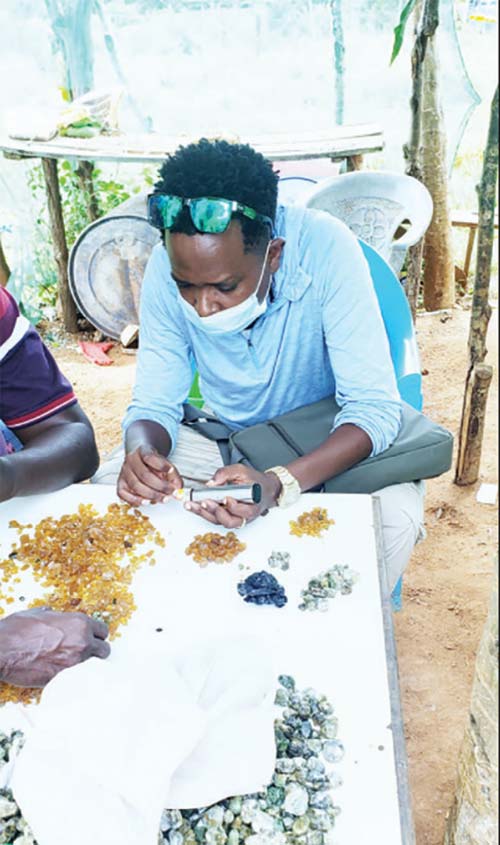
The local restrictions obviously led to a reduced volume of gems, mainly tsavorite, from artisanal miners, coming out of the ground. However, the absence of international buyers allowed locals to buy this with little competition. This situation only lasted for a few months; by the end of 2020, international buyers (especially Sri Lankans) returned to the local markets.
Since direct governmental support was rather limited and established companies relied on their own reserves, ASM communities received strong support from a number of nongovernmental organizations. According to Mr. Marvin Wambua (Amor Gems), who is involved with several of them, their efforts were widely appreciated. The Association of Women in Extractives in Kenya (AWEIK) conducted a number of local training and sensitization sessions that focused on women miners. In addition to informing miners about Covid, they included some basics on gemology and economic empowerment. Many of these sessions were co-organized with the Ministry of Petroleum and Mining as well as the State Department for Mining. They were held in several mining areas in Taita-Taveta as well as in the northern Turkana District. One of the most active gem-related NGOs in Kenya and Tanzania is GemLegacy, which donated food and other supplies to the ASM communities that were most severely impacted. When the mining activities restarted, they switched to supplying mining equipment.
Since direct governmental support was limited and established companies relied on their reserves, ASM communities received strong support from several non-governmental organizations.
Tanzania
While Tanzania and Kenya share a long border and have similar gem deposits, their reaction to the Covid pandemic couldn’t be more different. The Tanzanian government officially denied the existence of the Covid-19 virus and thus refused to take any formal measure. International travel was restricted, however, which did not allow buyers to travel and, in return, took away the incentive for the majority of ASM communities.

Some organizations tried to adapt to these new circumstances by moving their sales activities online. Small local buyers expanded their social media sales, while others relied on local representatives to purchase rough goods.
Production levels were distinctly lower than the pre-Covid era, but still some nice discoveries were made. During Q4 of 2020, a pocket of high quality spinel was discovered in Mahenge, and high value rough of different species such as tourmaline, garnet and sapphire were found in other areas.
Bridges observed that, while the reactions of Kenya and Tanzania to Covid-19 were extremely different, the impact on the gem industry is very similar. Mining activity in both countries decreased significantly, mostly due to a lack of international buyers whose regular financial input is critical to keeping artisanal and smaller mine operations running.
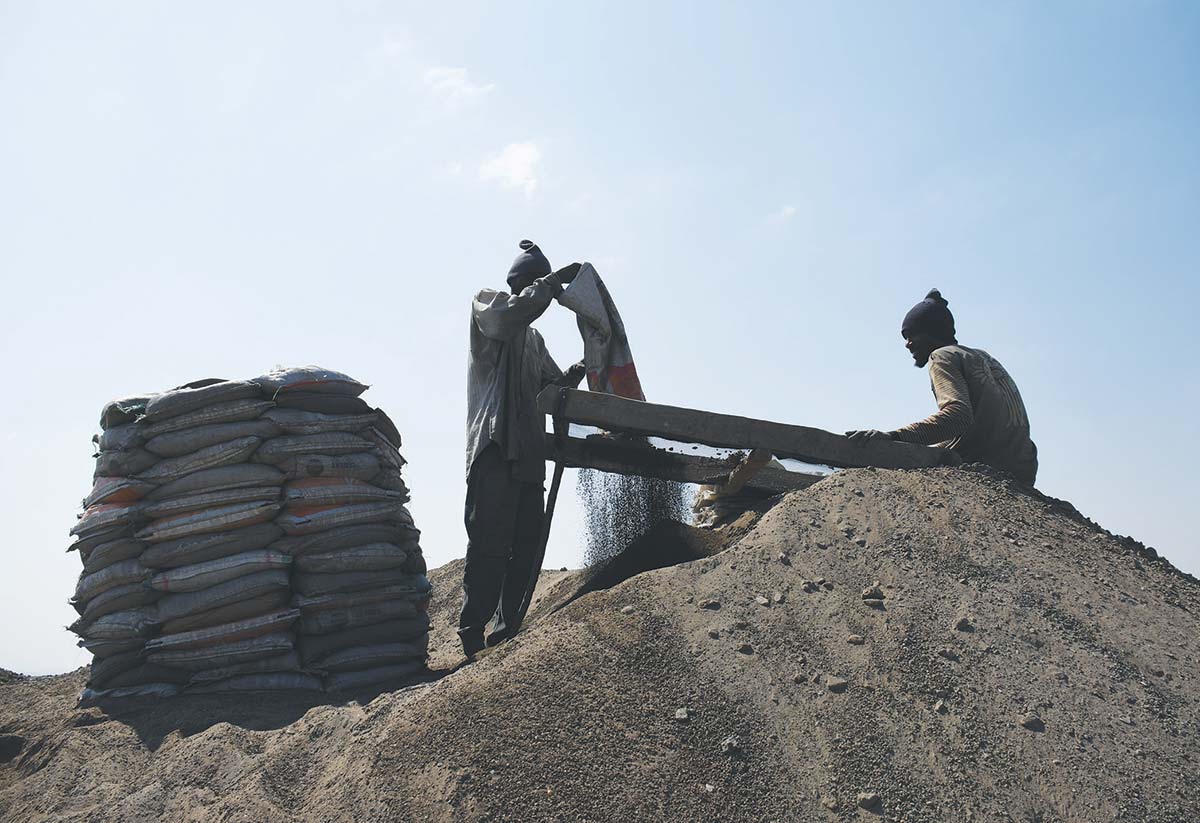
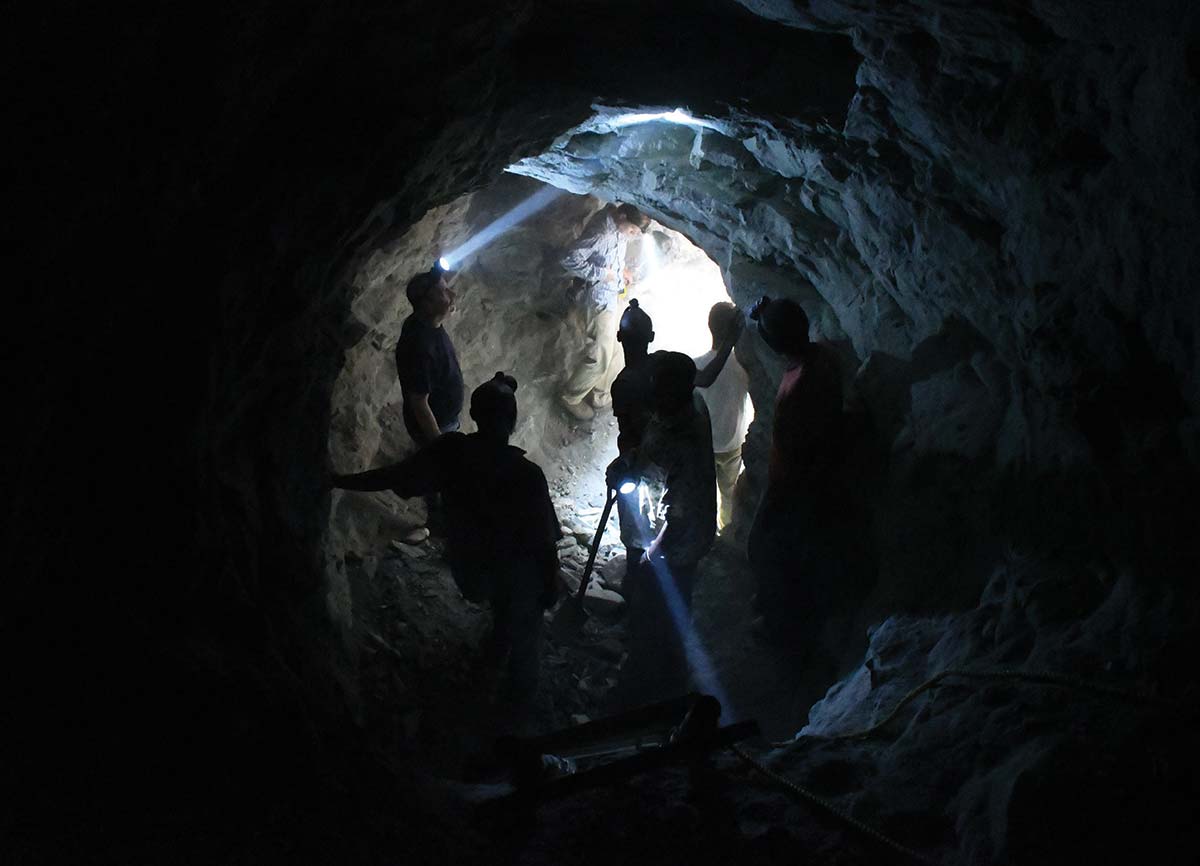
It is often overlooked how critical the mining communities in East Africa are for the entire gem and jewelry world.
Madagascar
Madagascar is an incredibly diverse gem source with many valuable minerals and specimens found in almost every corner of the island. Its richness in resources is not reflected in its economical state that was not optimistic even in pre-Covid times. Political instability created unfavorable conditions for market growth. This also allowed many opportunists to slip through the nets. The arrival of Covid-19 made a serious impact on the limited growth opportunities, but the near tabula rasa situation and halt of the trade also provide a platform for reforms/regulations that might benefit the trade in the long run.
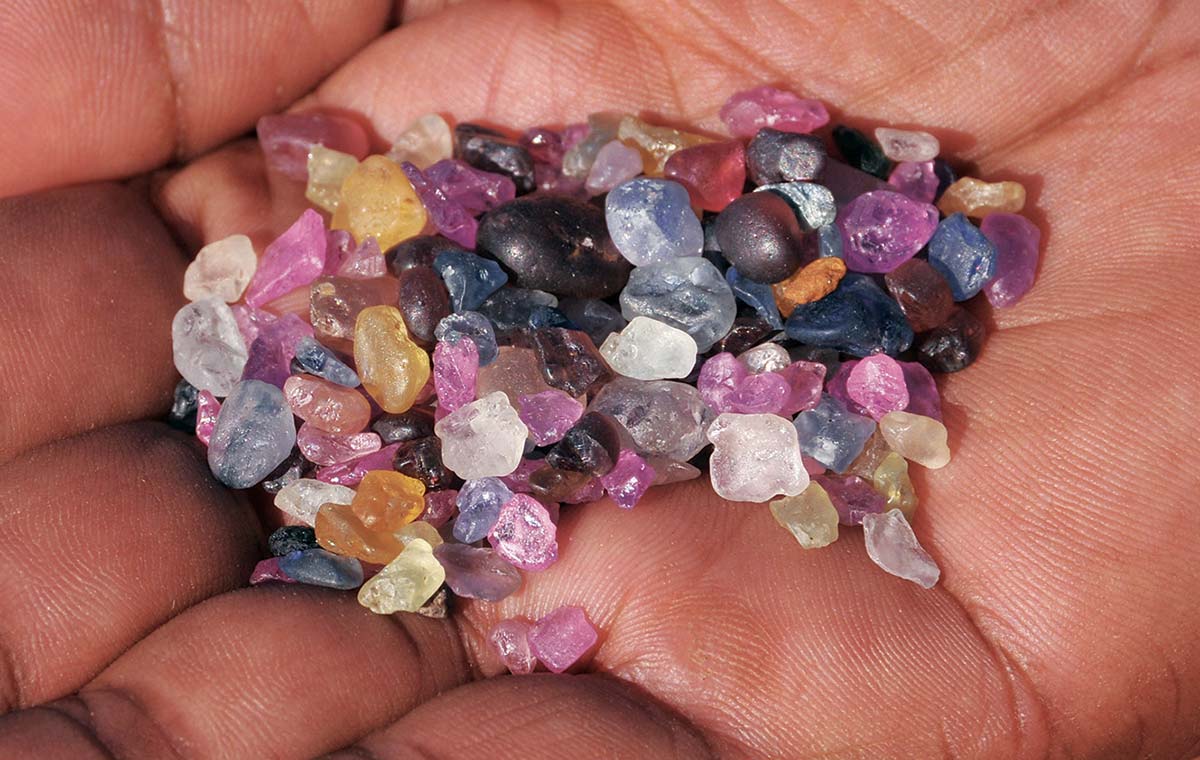
Many of the Malagasy gem deposits are worked by artisanal miners, relying on international buyers that are based in the local markets.
The pegmatite mining areas in Central and Southern Madagascar were already unstable before the pandemic. The mines produce a wide variety of gems and specimens including beryl (aquamarine, morganite, etc), tourmaline and quartz. The main buyers are European and Chinese but, due to price fluctuations, purchases of these gems had already decreased. Nevertheless, a significant aquamarine discovery was made in early 2020, but the material was slow to reach the international market.
In the Ilakaka region, where the main product is sapphire, the buyers are dominantly Asian. Mr. Althas Cader, whose company JewelMine is active in mining and trading around Ilakaka, saw many of these buyers return to their home country. This caused a drastic drop in prices because competition was significantly lower. This quickly resulted in lower mining yields since the incentive for the independent miners was gone.
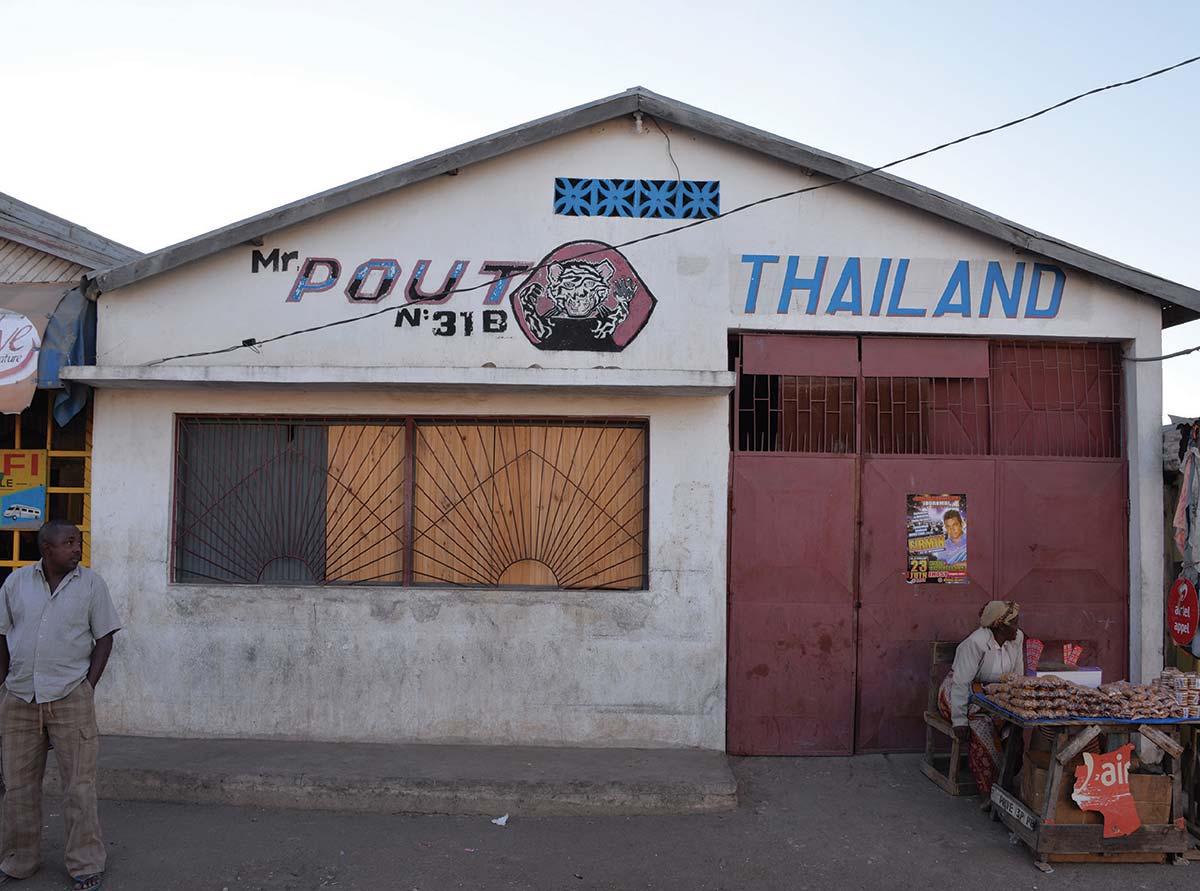
Administration is tedious and complex in Madagascar; as a result, buyers, sellers and miners often find alternative ways to procure the right documentation. With the increasing instability due to Covid, this became unreliable, and only those who were 100% in order with their paperwork were able to keep working. This trend was not exclusive to the gem industry but was also seen in other sectors such as manufacturing and agriculture.
With borders closed, transport services reduced, and administrative departments running at slower speeds, the situation for larger operations that have an established (internal) supply chain was also challenging. John Ferry (Prosperity Earth LLC), a partner in a large demantoid mine in the north of the country, mentions that their operations were only slightly disrupted. Located in a very remote area, they work with a completely local Malagasy mining crew. As such, they were not as strongly impacted by lockdowns and Covid itself. Their cutting facility in the capital Antananarivo was closed for a short time but opened quickly with ample safety measurements.
While their mining was virtually unaffected, they had some challenges in moving the stones out of the country. The reduced government services made export procedures even more tedious with goods often held for months by customs agents, while international travel restrictions did not allow for personal carrying of the goods, forcing them to switch to couriers.
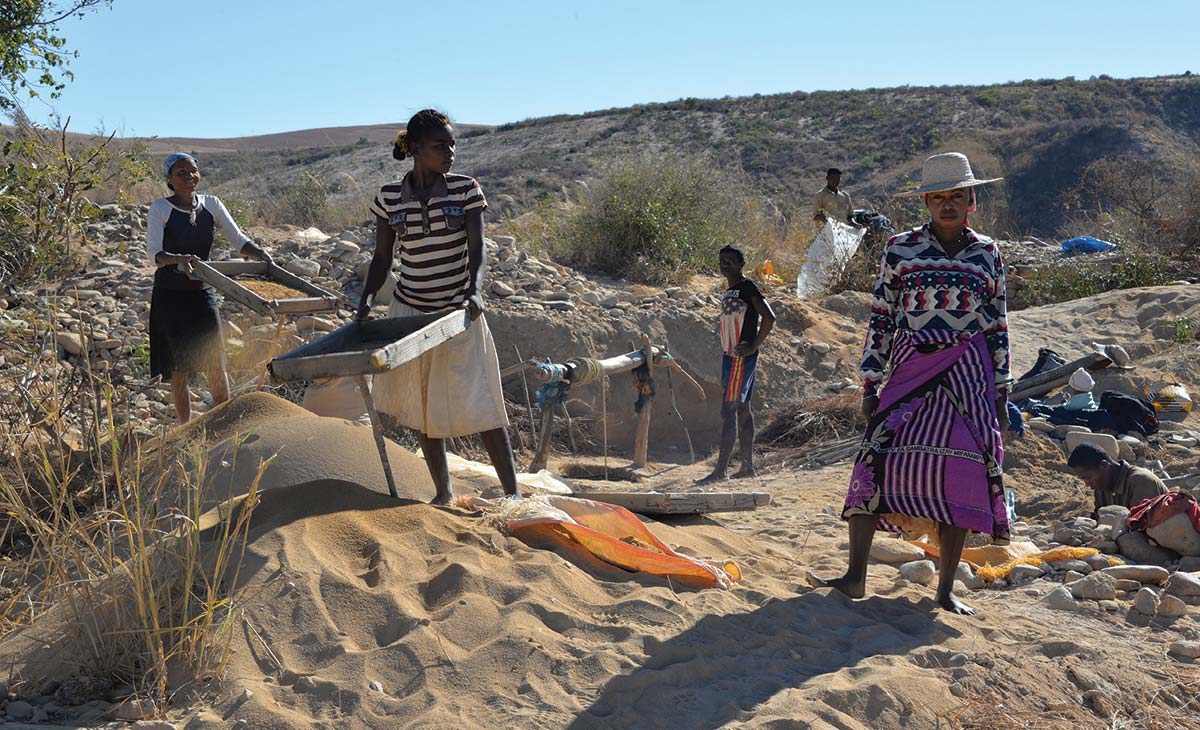
Small-Scale Mining in Mozambique
Mozambique is known to most people as a ruby source, but it hosts a large variety of gemstones. In the central to northern part of the country, many varieties of tourmaline, beryl and garnet are being mined by artisanal miners. Mr. Marvin Wambua travels there regularly to source material from newly discovered pockets of gem material, even during Covid times.
Obviously, the pandemic slowed down international travel and the absence of foreign buyers was felt strongly, but this area of Mozambique presents another challenge. African gem traders are a critical link in the gem trade and in most areas, their knowledge of Swahili, English, and French allows them to communicate fluently with miners and the local communities. But in Mozambique, the Portuguese language creates another hurdle in setting up relationships with the miners.
The ASM communities are often remote and closed off from the outside, making them relatively removed from the impacts of the pandemic. Regular funding from West African gem traders allowed them to continue mining. Thus, new pockets of aquamarine, morganite, tourmaline, cuprian tourmaline and garnet were continuously unearthed. In the Chimoio area, which attracted attention after the discovery of fine purple garnet in 2016, cabochon grade fancy sapphire is being mined. The material has a variety of colors with the orange-pink variety being the most sought after.
Large-Scale Mining in Mozambique and Zambia
Gemfields operates two large mines in Mozambique and Zambia, mining rubies and emeralds, respectively. During the spring of 2020, activity at both sites was reduced to the minimum and production of gemstones was halted. In April 2021, both sites were brought back into full production. To allow for a safe return to full capacity, a strict set of measurements was implemented to follow local guidelines and minimize changes of Covid-19 transmission. This includes temperature scanning, rapid antigen testing, handwashing stations, etc.
Surrounding communities were included in these efforts by sharing equipment with medical facilities and setting up educational awareness campaigns. When vaccines became available, Gemfields set up a voluntary program for its staff.
While staff salaries were reduced during the year that mining was suspended, no jobs were cut and all benefits were restored when the mines fully reopened. Normally, the production of both mines is sold via auctions to international buyers but, in a world dominated by travel restrictions and quarantines, this was impossible. Logistics for the material were also a challenge, shown by the fact that emeralds sold in February 2020 only reached buyers’ offices after eight months.
Gemfields’ revenue from auctions in 2020 dropped dramatically compared to 2019. During the period that mines were closed, no additional gems were added to the company’s inventory. Towards the end of 2020, Gemfields introduced its Adapted Auction Model since demand from their clients was growing. These auctions allowed for convenient viewing of the gem parcels under the current circumstances, and to enter bids via an online platform.
While mining was severely impacted by the Covid-19 pandemic, demand for the goods from these mines remained and is expected to increase in the coming years.
Summary
The direct impact of Covid-19 was felt in different ways across East Africa. While many artisanal, small-scale miners were able to continue their work, they had little incentive to do so. The absence of international buyers disrupted the flow of rough gems and return of cash into the communities. On top of that, many artisanal miners returned to gold mining. This phenomenon is common when gold reaches high prices. During these times, it is more profitable to wash for gold dust rather than take the gamble of gem mining where the value extracted is never guaranteed.
It is often overlooked how critical the mining communities in East Africa are for the entire gem and jewelry world. They have suffered much during this period and are eagerly awaiting the opportunity to present their gems to the world, once international travel picks up again.
Acknowledgements
Many thanks to Althas Cader (Jewel Mine), Biniyam Bekele, Bruce Bridges (Bridges Tsavorite), John Ferry (Prosperity Earth LLC), Marvin Wambua (Amor Gems) and Peter Ngumbi (Vter Young) for their advice and insights into the East African gem mining scene.
















